Few TV series reflect the weirdness and creativity of the sixties quite like The Avengers and it still stands the test of time, in fact it has benefitted from it.
The Avengers, for me, is the second most brilliant TV programme of the 60s (and probably the 70s). So why has it taken Genxculture so long to write about this fantastic series? Really, because it’s such a difficult, complex and unique series to unpack and with so much to write about, it’s a mammoth task. Where to start?
But with the incredibly sad passing of the wonderful Diana Rigg recently it seemed the right time to celebrate a show that was quirky, unique, funny, clever, sometimes violent, usually weird and always utterly engaging. As sixties attitudes go, it had it in bucketloads.
The Avengers ran from 1961 to 1969, or until 1977 if you count, for me, the disappointing New Avengers (which we won’t be doing here). But for real Avengers’ aficionados the classic period was from series 4 in 1965 to series 6 in 1969. The previous version (Series 1-3), although influential in many ways, was just a crime/ espionage thriller and lacked the quirkiness, the humour, the atmosphere, narrative creativity and utter weirdness of the subsequent series 4-6. It did introduce John Steed played by Patrick MacNee, of course, who was a much more serious, mainstream sort of character and it also introduced the legendary proto-feminist Cathy Gale, played by also recently sadly departed Honor Blackman. What’s important about this character is that she was the first female character on TV to be not only intelligent, she was an anthropologist, and dressed in leather boots and catsuits, she could also look after herself in a physical fight with men. She eventually left the series in 1964 to take the role of Pussy Galore in Goldfinger but her influence endured and many of her facets were adopted by the wonderful Diana Rigg when she took over as Steed’s partner in 1965 for series 4. An indication of the programme’s popularity and of Blackman’s was that both she and Patrick MacNee released a single entitled Kinky Boots, originally created for an item on That Was The Week That Was by Ned Sherrin. Although not a hit, it was played regularly and was well known at the time.

By the time the producers and creators, Brian Clemens and Albert Fennell got around to recruiting a young up and coming actress, Diana Rigg, to replace Blackman, they had decided to take The Avengers in a very different direction and one that would write the series into TV history. The conventional narratives of series 1-3 were laid to rest, the flirtatious, innuendo filled exchanges between Steed and Emma, and later Tara, the eccentric nature of characters and plots, the flamboyant sixties sets and iconography and the often uneasy but fascinating juxtaposition of violence and comedy took centre stage.
It has to be remembered that 1965 was a time of monumental change in British society. Young people were beginning to question the supposed cherished ideals of the 50s. It was a time when literature, theatre and the cinema were experimenting with unconventional narratives. A time of Pinter, the French Nouvelle Vague and Godard, Italian post-neo realism and Antonioni, The Beatles were starting to pull back the boundaries of music, Stockhausen was throwing out the classical music rule books, post-modernism was all around and was manifested in the literature of Burroughs and Malamud and the pop art of Warhol, Hockney and Liechtenstein while Lindsay Anderson, Tony Richardson and Dick Lester were making a type of film we’d never seen before. TV and film could now take chances, it didn’t all have to be believable or realistic. In fact, the less realistic the better as the 50s had been a decade of stultifying realism. And into this dizzying cultural milieu emerged a series that embraced and nodded to many of these game-changers. The Avengers!
The first stage in the creation of this newly and vastly improved series was the introduction of Diana Rigg as Emma Peel. Although not the first choice for the role she took to it like a hog to persimmons and her on-screen chemistry with Patrick MacNee was clear from Episode 1 of series 4. Producer Brian Clemens had decided the series needed a female protagonist similar to Blackman but with extra ‘m(an)-appeal’ and Emma Peel was born. Diana Rigg appeared in 51 episodes of The Avengers beginning in September 1965 with The Town of No Return and finishing almost exactly three years later with The Forget-Me-Knot in September 1968, which also introduced her successor Linda Thorson as Tara King. Rigg went on to become a Bond girl, like Honor Blackman, in one of the best Bond’s ever, On Her Majesty’s Secret Service and then became an acclaimed stage, film and TV actress until her very sad death in 2020.

Linda Thorson never really filled the Rigg leather catsuit and lacked the confidence, wit, intelligence and athleticism of Emma Peel but she did appear in some classic Avengers’ episodes. How she got the part has always been a little mysterious. It’s alleged the short-lived producer of series 6, John Brice, was having a relationship with her at the time they were scouting around for Rigg’s replacement. With little acting experience she was always going to be a stretch but she did become synonymous with the classic Avengers and was certainly in better episodes, I feel, than any of the New Avengers.
It was one of the first British series to be sold and aired on prime-time US television, ABC paying £2 million for the first 26 episodes of the MacNee / Rigg era. This allowed the producers to use outdoor locations and employ casts of leading actors as well as expensive indoor sets and impressive special effects. It also meant that in 1966 series 5 would be filmed in colour. Although this didn’t affect the UK market as colour broadcasting was still some way off, it appealed to the more technically sophisticated American market. And it was this American popularity that pushed the writers into creating stories that were quintessentially English, not British, although most Americans probably thought English was British as many still do. So Steed’s bowler hat, umbrella, vintage car and impeccable manners became a vital part of The Avengers’ USP. Many stories also pushed this anglocentric narrative but often in a hugely ironic way that British viewers would have noticed and enjoyed but most Americans would probably have missed but certainly have appreciated in a different way. Steed’s image was so important to the marketing of the series to other countries that often their titles reflected it. In Germany, for example, The Avengers was known as Mit Schirm, Charme and Melone or ‘With Umbrella, Charm and Bowler Hat‘ or in France Chapeau melon et bottes de cuir (Bowler Hat and Leather Boots which sounds like a 60s soft-porn film). Not exactly giving the casual viewer much inkling as to what this series might be about.

Watching The Avengers today really reveals what an exceptional series it was. The acting of Patrick MacNee, at the time, seemed casual almost as if he wasn’t really trying but on further analysis it was quite superb. As well as having to play other characters as in ‘Who’s Who‘ (S5,E16) and ‘They Keep Killing Steed‘(S6,E12) he also played other people when working undercover. The effortless chemistry between Steed and Emma is a shining example of two-handed acting at its best and because you hardly even notice it, it makes it even more impressive. When Linda Thorson arrived there was still chemistry but the dynamic had changed. They were still partners, probably even romantic partners, but it was not, like Steed and Emma, an equal partnership. Tara was very much the junior, more subservient partner. She did not have the confidence, the wit, the physical presence or the acting ability of Rigg. But, after a while, she settled into the role. The Avengers was never quite the same but it still retained that surrealistic, strange, distinctive atmosphere. And with some of the Tara episodes, even more so.

So what was it about The Avengers that made it so unique? Well…
The openings: Although the opening credits changed occasionally the opening ‘teaser’ sequence was always designed to get the viewer interested, intrigued and usually puzzled straight away. The sequence normally began in a straightforward way with conventional characters in a conventional settingbut the pay off would be of a bizarre, strange or ludicrous nature. For example, in The £50,000 Pound Breakfast (S5,E19) a man driving a car is having a conversation with an unseen passenger, who sounds like a child, about driving to Switzerland. Suddenly he is involved in a crash which renders him unconscious. As bystanders drag him out of the car the door of the passenger seat is opened and a ventriloquist’s dummy tumbles out. In The Town Of No Return (S4,E1) a fisherman on the beach is mending his nets. Suddenly an object that looks like a bubble emerges from the sea. The bubble begins to unzip revealing a city gent in a bowler hat and umbrella who walks up the beach, nodding to the fisherman who carries on unsurprised by what just happened, In The Murder Market (S4,E7) a middle-aged man and woman meet up on a blind date and after some brief pleasantries the woman pulls out a gun from her handbag and shoots the man, In The Correct Way To Kill (S5,E9) a foreign agent lurks at night in the foggy back alleys of some British town. He is approached by two city gents in bowler hats and umbrellas who greet him before producing guns with silencers and shoot the foreign agent dead. In Murdersville (S5,E23), two country-types sit outside a pub in a picturesque English village drinking beer and chatting about the weather, suddenly a man emerges from the doorway of the pub pursued by another who shoots him dead. The yokels carry on chatting as if nothing has happened. In Death’s Door (S5,E18) a British diplomat is driven in a limousine to a conference but when he approaches the entrance to the building he suddenly panics and refuses to cross the threshold fearing for his life.
For the start of Series 6 we also had an idiosyncratic opening straight after this ‘teaser’ sequence where Emma would be involved in some activity like painting or decorating or watching TV when she would notice a message appearing in the most unexpected way saying ‘Mrs Peel, we’re needed!’ And Steed would appear. This opening was scrapped after about 15 episodes to save money, for some reason.

My particular favourite ‘teaser’ to an episode, however, is The Girl From Auntie written by the excellent Roger Marshall (S4,E17). It’s an early sunny morning and we’re outside the entrance of what seems like a huge house near a river. Emma suddenly emerges in her finery with balloons having been attending a very big all-night party (this was the sixties after all!) and moves towards her car. Another female party-goer comes out followed by a male in a tuxedo wearing a pig’s head mask. They embrace and drive off leaving Emma watching them. Suddenly, on the road, an old lady dressed in black on a bicycle approaches and falls off. Emma runs across to help but the old lady produces some knitting needles from the bicycle’s basket and stabs Emma who collapses unconscious. And if that doesn’t get an audience interested I don’t know what will.
The stories: The original three series of The Avengers with MacNee and Blackman used a fairly conventional crime/ espionage narrative. From series 4, however, convention went out the window. Stories often belonged to the science fiction genre, they were fantastical, technological, macabre, mysterious and usually downright weird. They weren’t meant to be believable, there was plenty of that on telly already, but The Avengers wanted their viewers to be transported for an hour to forget about verisimilitude or realism and exist in Avengerland for a while. Who cares if Emma or Steed are transported back in time, or reduced to 6 inches in size, or that the population of a military aerodrome suddenly disappears, or that a quaint English village becomes populated with murderous assassins, or that a terrifying comic strip character comes to life to kill its enemies, or that two music hall comedians go on a psychotic killing rampage, or that they are pursued by an invisible killer or that their lives are threatened by psychopathic robots? I could, of course, go on but this gives only a taste of the some of the quirkier plots which all seemed completely normal when watching The Avengers.



Narrative techniques: The relatively generous budget enjoyed by The Avengers production allowed a dizzying range of techniques to be used. Moving camera, unusual camera angles, highly coloured sets (in Series 5 and 6), expensive props, flamboyant costumes, expansive location filming, dream sequences and special effects (for the time) were all used liberally to enhance the strangest of plots.



Sixties iconography: The Avengers wore its swinging sixties credentials on its designer sleeves. Apart from Emma and Steed’s ultra-fashionable gear, the pop art backdrops, abstract narrative concepts and postmodern textual references were all over the series like a rash. Have a look at the dream-like hypnotism sequences in ‘Something Nasty in The Nursery‘ (S5, Ep 14), or the flamboyant set of The Superlative Seven (S5,E12), a spoof on The Magnificent Seven, (S5, Ep 12) or some of the imagery in ‘The Hour That Never Was,‘ (S4 Ep 9) or the weird opening sequence of The Girl From Auntie, mentioned above, a reference to popular US series The Girl From Uncle (See The Girl From UNCLE: A Brief But Memorable Phenomenon) (S4, Ep 14) or the pop art sets in ‘Game‘(S6, Ep2), or The Winged Avenger (S5,E6). It’s all there in spade loads.
Eccentric guest characters: Between 1965 and 1969 The Avengers featured an A-Z of great British (and occasionally American) character actors. Name a well-known character actor from the 60s and he or she will almost certainly have appeared in The Avengers, often on more than one occasion. Usually this actor will have played a wonderfully observed British eccentric and eccentricity ran through The Avengers like the writing through Blackpool Rock. Examples, in no particular order, included:
Bernard Cribbins: Plays Arkwright, a knitting instructor (geddit?) who conducts his lessons like a sequence dance in The Girl From Auntie (S4, E17) and then a brilliant turn in Look, (Stop Me If You’ve Heard This One), But There Was These Two Fellers.. (S6, E11) as Bradley Marler, a joke writer who is almost engulfed by the discarded jokes surrounding his desk. It’s a bit like Winnie in Beckett’s Happy Days, if that doesn’t sound too pretentious. Which it does. Also appearing in this episode was a young John Cleese as Marcus Rugman, a crotchety civil servant whose job it is to keep the archives of each individual clown’s face makeup painted meticulously on eggs. That story writes itself…

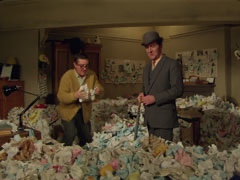
Roy Kinnear: Great comic character actor was perfect for the sort of roles required in The Avengers. He appeared in three Avengers episodes (four if you include an early Cathy Gale Avengers outing), and was in the very last classic Avengers episode Bizarre (S6 Ep33) as Bagpipes Happychap (they were trying just a bit too hard by this time) as a jolly undertaker. He also played an Avengers’ favourite in The See-Through Man (S5, Ep4), a nutty scientist experimenting with explosives. This story also wrote itself.

Ronnie Barker: He had to appear at some point in The Avengers and it just happened to be a quintessentially brilliant, but quite violent, episode, The Hidden Tiger (S5, E8). He plays the nutty plus-foured Mr Cheshire, the manager of PURRR, (Philanthropic Union for the Rescue, Relief and Recuperation of Cats). A wonderfully daft and visually striking episode.


Warren Mitchell: The early classic Avengers was still ostensibly about espionage and Warren Mitchell turned up twice as the same character, an inept and reluctant Russian spy, Brodny, who enjoyed the comforts of the West a little too much, who Steed played like a balalaika. He is the only guest character to appear twice, in Two’s A Crowd (S4, E12) and The See-Through Man (S5, E4).

Four legendary Dad’s Army actors appeared in classic The Avengers episodes:
Arthur Lowe: A racing nut with a Brand’s Hatch simulator In Dead Man’s Treasure (S6, E16)

Clive Dunn: As an eccentric toy shop owner who manufactures toys for the aristocracy in Something Nasty In The Nursery (S5, E14)
John Laurie: As a slightly unhinged railway enthusiast in A Funny Thing Happened On The Way To The Station (S5, E13). He also appeared in Tara King episode Pandora (S6, E31) as well as two Cathy Gale episodes.

John Le Mesurier: As a dodgy gun-toting butler in What The Butler Saw (S4, E22).
Peter Wyngarde: TV sex-bomb Wyngarde appeared in two classic Avengers episodes including the most notorious ever, A Touch of Brimstone (S4, E21) which recreated The Hellfire Club and had Emma dressed in all sorts of bondage gear! Very daring even for the 60s. So much so that ABC in America pulled this episode as all their bible belt Christian fundamentalists would have probably enjoyed the episode a little too much. Wyngarde also camped it up in Epic (S5, E11) where he plays an ageing Hollywood actor who, along with another actor and director, essentially are filming a snuff movie with Emma as the star/ victim.

Jeremy Lloyd: Are You Being Served writer and once Rowan and Martin’s Laugh In cast member appeared as an upper class chimney sweep (what was he in when he wasn’t ‘upper-class’?) in From Venus With Love (S5,E1), the first full colour episode of The Avengers and then in the later Thingamajig (S6, E26) as a vicar friend of Steed’s.

Violence: It was decided at the start of Series 4 that Avengerland would not feature the police, as the cases Steed and Emma were called to were of a nature that excluded the police. The police being called, apart from getting in the way of Steed and Emma/Tara’s investigation, would have added too much of an everyday realism to the show, something that was anathema to Avengerland. It was also decided that there would be no blood in any of the murders, killings and assassinations featured throughout the series. Although other characters used guns, it was rare for for Steed or Emma to use them. This, of course, added to the comic strip violence which often concluded many episodes but that’s not to say the series wasn’t violent. Much of the death in The Avengers was very violent, so much so that for the afternoon re-runs on ITV 4 some years ago, some supposedly violent scenes were edited out and the ABC network in the US during the 60s scheduled the programme at 10.00pm due to this.
Episodes: Between the start of Series 4 in 1965 and the final episode of Series 6 in 1969 for anyone unfamiliar with The Avengers I would, quite literally, recommend any episode should one want to experience just a taste of what The Avengers was all about. Every episode involved the classic elements that made the series so unique. But if I was pressed to come up with what I believe were the most memorable and the ones that included every wonderfully surreal component in bucketloads (in no particular order) I would suggest…..
Death At Bargain Prices (S4, E4)
After an agent is killed in a large London department store Emma and Steed are sent to investigate. The surrealism the director and writer (Roger Marshall) manage to squeeze out of this location is impressive and the ending is genuinely weird! Some superb use of outsize cartoon characters.

The Murder Market (S4, E7)
Some things never change and computer dating is explored here although of a slightly less technological type than now. Steed and Emma investigate some bafflingly motiveless murders linked to Togetherness Inc. dating agency. MacNee is superb in this episode and the opening sequence is wonderfully shocking and the dialogue crackling throughout.

The Hour That Never Was (S4, E9)
One of my top five Avengers episodes of all time and another tour-d-force from writer Roger Marshall. Emma accompanies Steed to a military reunion at an airfield in the English countryside. On their arrival they find it deserted but with some tantalising signs of life. An abandoned bicycle with its wheel still revolving, a mysterious milk float always being mysteriously driven just out of reach, the officers’ mess set for the celebration. A wonderfully surreal episode with some quite existential images of isolation and alienation.


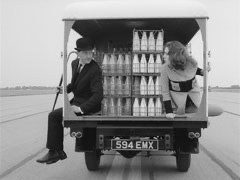
Too Many Christmas Trees (S4, E13)
Worth watching for Steed’s brilliantly creepy opening dream sequence, the brooding supernatural atmosphere and the final fight scene in a hall of mirrors.

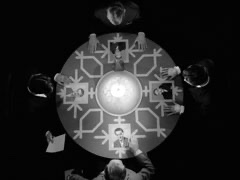

The Girl From Auntie (S4, E17)
Another of my personal favourites and a nod to their US market through their humorous reference to the popular Girl From Uncle TV series (See The Girl From UNCLE: A Brief But Memorable Phenomenon). I’ve already mentioned the fantastically surreal, quintessentially sixties opening sequence. With a superbly eccentric turn from the great Bernard Cribbins as a terpsichorean knitting instructor to the high body count and Emma being kidnapped and held in a gilded cage, replaced for the episode by ubiquitous 60s actress Liz Fraser, it’s a complete joy but, as with so many Avengers plots, don’t think through the ending too much.



The House That Jack Built (S4, E23)
An Avengers all-time top three episode for me. Truly terrifying, existential and brilliantly constructed by creator and regular writer Brian Clemens. Emma is lured to an isolated country house and is trapped in a murderous web of psychological terror. I actually remember watching this episode when it was initially broadcast on 5 March 1966 and it had a profound effect on me then. Genuinely disturbing and absolutely engrossing.



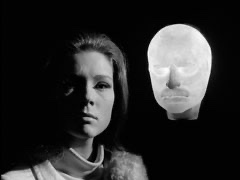
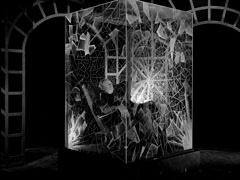
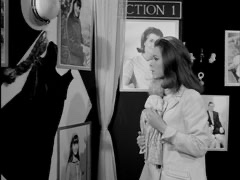
Escape In Time(S5, E3)
Who would have thought The Avengers would get involved in time travel? Well, me for one as nothing surprises me about Steed and Emma’s adventures. A terrific turn by Peter Bowles as the psychopathic Matthew Thyssen and a superbly weird, almost silent, scene in an Avengerland thoroughfare called Mackidockie Street (which crops up in another Avengers episode) as they investigate some world criminals disappearing, seemingly into thin air.

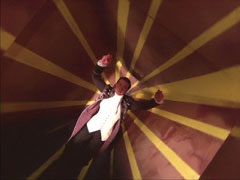

The Winged Avenger (S5, E6)
Another classic which is not only frightening but superbly written. With some pop art references to wonderful mega-US series Batman (See Batman: A 60s Sitcom Phenomenon) Steed and Mrs Peel investigate the brutal deaths of some businessmen from the publishing industry. The men appear to have been torn to ribbons by powerful claws (although no blood is in evidence, obviously) and the trail leads to the writers of a super hero comic strip. Another episode I remember watching on its first broadcast on 18 February 1967 and found it terrifying, particularly the opening sequence. An Avengers’ triumph in every way.
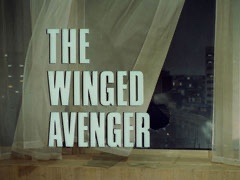
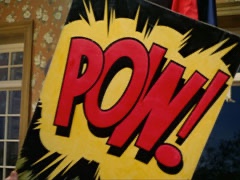

Something Nasty In The Nursery (S5, E14)
A group of men involved in government secrets find themselves regressing to childhood and sitting in their nurseries with a bouncing ball, and an unseen nanny lurks in the background. This leads Steed and Emma to a school for training nannies and the strangeness just develops from here. With guest stars including Clive Dunn and Yootha Joyce, the regressive sequences are beautifully psychedelic and strange.


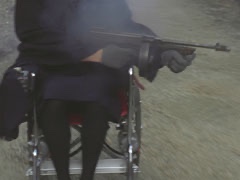
Look-(stop me if you’ve heard this one before) But There Were These Two Fellers… (S7, E11)
Although this is the only Tara King episode I’ve included, its a cracker! At the beginning of filming what turned out to be the final series of the classic Avengers, writer Dennis Spooner revealed that they knew it was going to be the last series. ABC had scheduled the previous series up against the hugely successful Rowan and Martin’s Laugh In and The Avengers just couldn’t compete. Because they knew it was final series writers and directors knew they could pretty much do what they wanted to do for the last 32 episodes and that’s exactly what they did. Plots got even weirder, characters even more eccentric, and plots even more surreal (if that was possible). Sometimes this laissez faire approach worked and sometimes it didn’t. For me, this episode summed up the wonderfully overblown surrealism of the series and although it’s the episode that splits Avengers’ fans, there is so much to admire in it. There’s far too much going on it to describe here but it involves two music hall clowns (Jimmy Jewell and a silent Julian Chagrin) bumping off a number of people involved in the building industry. It’s extremely funny (particularly the scenes in the Vauda Villa, a rest home for underused variety artists), colourful, bizarre, includes terrific guest star turns from Bernard Cribbins, John Cleese and, as mentioned, Jimmy Jewell and is often quite disturbing. Even more so for anyone suffering from coulrophobia. In a word: sensational! But not for everyone…..




So where did it all go wrong? Well it didn’t really, but because of the incredible standard of the series 4 and 5, series 6 just seemed a bit predictable and pedestrian at times, with a few glorious exceptions. It didn’t help that Linda Thorson was no Diana Rigg but some episodes just seemed to be constructed of gratuitous Avengerisms. Some episodes, though, were still excellent such as The Interrogators with Christopher Lee (S7,E14), Wish You were Here (a homage to The Prisoner, more on that to come…) (S7,E20), Take Me To Your Leader (S7,E23) and Game (S7,E2). It was far from being bad, it just wasn’t as good or creative as many of the earlier episodes.
The introduction of ‘Mother‘ (Patrick Newell) and his non-speaking assistant Rhonda, Steed and Tara’s boss, didn’t help. Including another regular character took it further away from Avengerland I felt, and although some of Steed’s meetings with Mother were characteristically strange (on the top of a London bus, down a manhole, in a swimming pool) it added too much of a comedy element. There was always comedy in The Avengers but Mother tipped the scales in the wrong direction slightly, I felt.

But to quibble about the final series is a bit like complaining about the quality of different brands of champagne (an appropriate analogy for The Avengers). It pulled back the boundaries of what TV thrillers could be, in fact what TV could be, and few programmes have lived up to its audacious, anarchic, creative and surreal mood. Although over 50 years old, it still seems as fresh and daring now as it did then.
But, should you decide to dip in to this visual rollercoaster of 60s genius, don’t think too much about the destination, just enjoy the ride.
And after all that, what is the greatest TV programme of the 60s? Well, The Prisoner. Obviously.
Then again….
Find everything you’ll ever need to know about this TV classic at the superb www.theavengerstv.com
